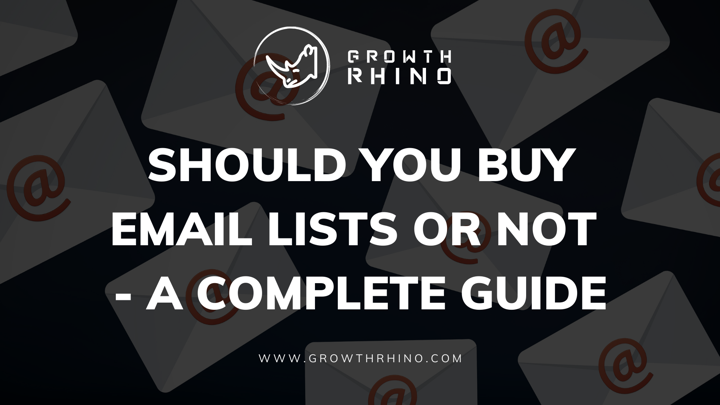
Every wise business executive familiar with the importance of effective data-driven marketing and the availability of new contacts will always look for a profitable buyers’ email list.
Buying email addresses is one strategy to increase the number of people you can reach. But like other marketing tactics, there are best practices to implement to make sure you get the most out of your email list.
First, you need to keep your list clean because that is the only way to maintain a good level of deliverability and a low bounce rate. A high bounce rate tells you that your email marketing lists may contain stale or inactive email addresses.
List hygiene is a well-known concept in digital marketing, and for good reason. Businesses can purchase email lists, but they should also keep them clean.
Cleaning an email list involves:
- Removing duplicate addresses.
- Removing or fixing addresses with typo errors.
- Updating invalid addresses.
- Deleting addresses causing hard or soft bounces.
Also, avoid spam filters by keeping the format of your emails simple and using graphics sparingly.
What Is an Opt-In List?
Opt-in is the marketing approach of soliciting permission from target potential customers to allow marketers to send promotional content to them.
The strategy is also called permission marketing and is categorized as:
- Single opt-in – The customer agrees to receive promotional content by filling out a prepared form and submitting it.
- Double opt-in – A two-step process starting from the single opt-in. The second step involves confirming the email address, done through another link.
Applied in the context of email marketing, an opt-in email list is a list of people who volunteered to submit their information. You can extract such a list separately from a voluminous database.
That means you have a separate list of people who have given you their information and agreed to receive promotional content from you. Customers who agree to provide their information do so in exchange for freebies.
Since people willfully gave their email addresses, the performance metrics of these email lists are generally better. The overall impact of such a strategy is improved outbound sales prospecting, which is a key to earning more revenue.
What Is a Purchased Email List?
Many companies sell or rent lists of email addresses, so it is easy to source these products. When buying an email list, it is imperative to read reviews about the companies that sell these products.
Many email data providers have bad collections of addresses because they do not update their information. People change jobs and emails. Thus, many email addresses become inactive over time.
The best way to avoid risking your sender reputation is to check the list now and then for dirty data. Dirty data includes spam traps and honeypots.
Email verification tool:
Protect your business from low-quality emails lists at all costs, and one of the ways to do it is by using an email list verification tool. This tool allows checking lists and identifying valid and invalid entries.
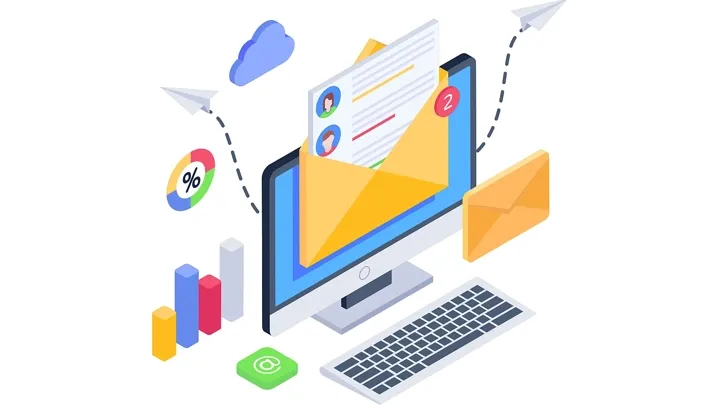
While the valid emails can give high-quality leads, all the rest will only bring damage to your IP reputation, which, in turn, leads to your campaign ending up in the recipients’ spam folders. The worst is if your ISP blocks you from sending future email campaigns.
Needless to say, you cannot just buy from any provider without researching first about the vendors you are considering, and you should at least test their product using a verification tool.
Benefits:
When purchasing email database from a quality provider, you are ensured of:
- Quality emails with no incorrect information.
- Low marketing cost. There is no incorrect information, so you are not going to send emails to people and businesses that do not exist, thereby cutting down your cost significantly.
This is how to buy email lists smartly.
Why You Shouldn’t Ever Buy an Email List?
We will show you ten reasons why purchasing email lists might not be a healthy marketing strategy for your business.
1) Avoid low-quality lists:
A low-quality list is a big NO for your business. If you read about a provider whose products have lots of unreliable information, look somewhere else.
Common issues with such providers include:
- Incomplete data (wrong names of people on the list, wrong addresses, etc.)
- Outdated information (businesses that have ceased operations, people moving to another position within the company, etc.)
- Email addresses gathered from the web illegally
The penalties can be staggering. The CAN-SPAM act allows recipients to file a case against businesses that send them emails without their permission. If that happens to you, you can be penalized tens of thousands of dollars with each email you have sent.
2) They will label you as a spammer:
This is one of the worst nightmares that can happen to your business – to be marked as a spammer. If that happens to you, you will be seen as someone who tricks people to download malware or share their information.
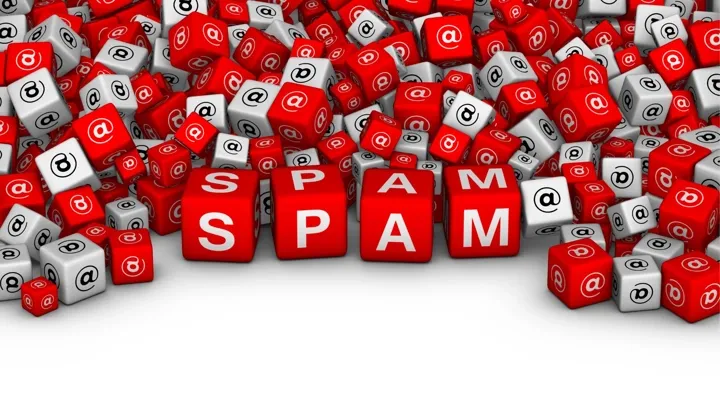
3) You will displease your email service provider:
If any of your messages become marked by your receivers as spam emails, your email service provider may take any of the following actions:
- Close your account.
- Slap your company with a fine.
- Take you to court.
Email service providers frown at any email list for sale, so make sure to abide by the terms and conditions of your provider by building your own lists or working with a reputable email list provider.
4) Other businesses may be using the same list:
Your list may be the same list your provider has also released to other businesses. That means someone else is also sending emails to the same people on your list, which increases the possibility of people getting irritated and fed up with all the noise that comes their way.
So, it is extremely important that your list must be unique and different from someone else’s list.
5) Risk of non-compliance with the GDPR:
The General Data Protection Regulation is a law that doubles down on the opt-in side of the customer-business relationship, and authorities have found that purchased email lists are not compliant.
For GDPR compliance, you must always provide the option for recipients to opt-out when they no longer want to receive emails from you.
6) Your sender reputation will take a deep dive:
Business reputation is a crucial factor that you should keep thinking about, and it is most damaging to your business if your online reputation suffers.
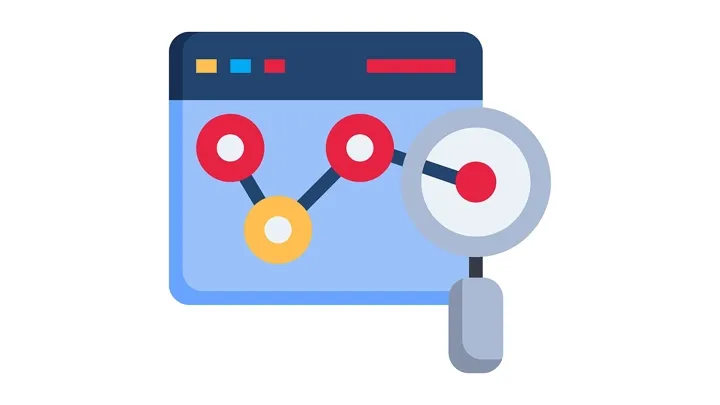
If people complain about your unsolicited emails, they will also make sure to warn other people online because that is how they can reach as many people as possible in the quickest possible time.
7) No experts recommend it:
If no reputable experts recommend the email list service provider, you better stay away from them. Again, read reviews before contacting a provider. Otherwise, you will end up wasting your money and seriously harming your business.
8) It will lower deliverability rate:
Some organizations are dedicated to fighting email spam, and they do that by creating honeypots and spam traps. Honeypots are planted email addresses designed to catch spammers.
When a honeypot is used in an email campaign, the sender will receive a penalty for his spammy activity. Ensure that not even one entry in your email list is a honeypot.
The same is true with spam traps, which are also instruments used to deter spammy activities in email campaigns. If you have an invalid email address that returns a hard bounce, the address will become a spam trap.
When another campaign is launched, the email address will not return a hard bounce notice this time around. Instead, it will proceed to accept your new message and slap you with the penalty for being a spammer.
9) Your engagement rate will suffer:
If your emails get deleted or sent to spam folders, you will not get a shot at engagement, and the first step for engagement is when your recipient opens your email.
This is why creating subject lines that evoke an emotional response and drive recipients to take action should be one of your important points of focus in email marketing.
If you are successful with subject lines, people will open your emails and engage with you through the next steps. You can send them to your blog post, give a discount offer, or introduce a new product.
10) It will hurt brand awareness:
Aside from damage to reputation, damage to brand awareness is another thing you must avoid. That means when people see your brand as the sender, they will send your email to their spam folder without a second thought, and wish that they will not come across your brand’s name again.

Here's How to Build an Email List That Works Effectively:
One of the best alternatives to buying email addresses is to build your own list. It will take time to grow such a list, but once you have it, you can launch an email campaign feeling assured that your recipients will not feel bad about receiving messages, offers, discounts, or freebies from you.
The best strategy to receive a positive response is to always provide value with every email you send. Provide as much value as possible to your potential subscribers.
Remember that the ultimate reason why you connect to these people is to build relationships and loyal followers out of these people. Some of the best strategies in building relationships with potential customers include:
- Writing killer emails.
- Embracing pathological empathy by tapping into their emotions and psyche.
- Exceeding customer service expectations.
- Sending them feedback and showing them that you genuinely care.
- Establishing trust.
- Being consistently and timely with your interactions.
- Rewarding loyalty.
Being creative and actively dealing with people’s pain points are ingredients to building successful relationships.
But first, how can you build an email list from scratch? Jot down these strategies.
Simply ask:
First, verbally ask your target audience if they like to sign up for your newsletters. Tell them that your newsletters are full of valuable information. Sell your content assertively, and show them that you are knowledgeable.
Here’s what you are going to get. If you do “the big ask” seven times a day, you can get 35 email addresses a week and 140 addresses per month. That is already a lot of people to target.
With this simple strategy, you can have over 1600 people you can conveniently and confidently send emails to in one year.
Place a form on your website:
In every opportunity to connect with a potential buyer, always redirect them to your website. It is also always good to put a form on every page of your website.
Alternatively, you can use popup forms to collect email addresses.
Work with a marketing agency:
Hire a reliable agency to do great pay-per-click campaigns on Google. Ask interested people to sign up. In exchange, give them valuable materials, such as videos, PDFs, or a free app trial.
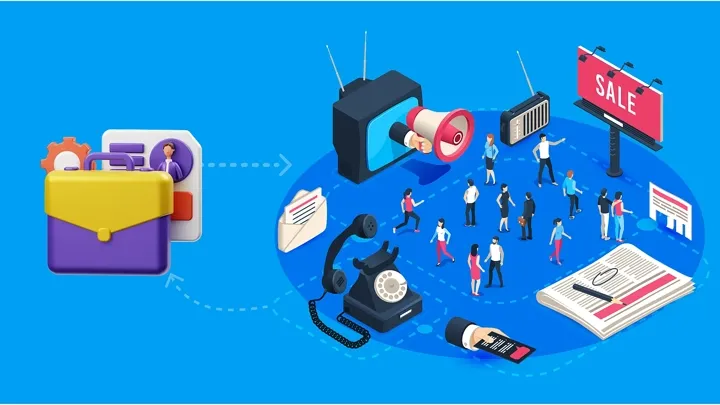
Leverage experts in your field:
Invite an expert to talk or write about something your target market needs to know. Ask visitors to allow you to send them messages through their emails.
Participate in product trade fairs:
Join trade fairs where you can dish out gifts or discount promos to participants. Ask for their emails in exchange.
Sponsor events:
Sponsor live events. Hand out free passes to participants and ask for their email addresses.
Do content marketing:
Use content marketing. Invite visitors to read your content without signing up, but offer additional content for those who sign up.
Build a free course:
Create a free course and talk about it on social platforms. Ask interested people to share their information with you.
What You Can Do Instead of Buying Email Lists:
There are more strategies for capturing email addresses fast instead of buying an email database. Use these alternative strategies because it's too dangerous to use a purchased email list.
Instead, you can:
Create buyer personas:
Building buyer personas can help make building email lists a lot easier. Be specific as much as possible with each persona. Once you have those personas, you can create a lead magnet for each.

Thus, you can have several lead magnets, each of which appeals to a specific target demographic. If your products span several demographics, you want to create a lead magnet for each one.
Promote high-quality content:
Whatever content or offer you will put behind your opt-in form needs to be thoughtful, useful, and relevant to your users.
You can promote your content marketing campaign on social media, within your website, or through a paid media campaign.
Use inbound marketing:
Use inbound marketing instead of wasting your time with list brokers. If you can create helpful and relevant content, you can also entice highly-qualified leads who are more willing to give you their consent.
Conclusion:
You have two options in sourcing email addresses of people and businesses in your target market: purchase an email list or grow your own list.
The first is a risky path to take, while the second can take time before you can launch your first campaign.
Keep in mind the various concepts shared in this post, especially those talking about regular cleaning of an email list and how to grow an email list.
Remember, you are doing cold email marketing here. So, the first batch of emails you will send should be preparatory or introductory in tone and approach, where you should not include images, links, or aggressive pitching.
The focus (for the first batch of emails) is to get high open and reply rates because that is a surefire way to get high email reputation and deliverability rates.
